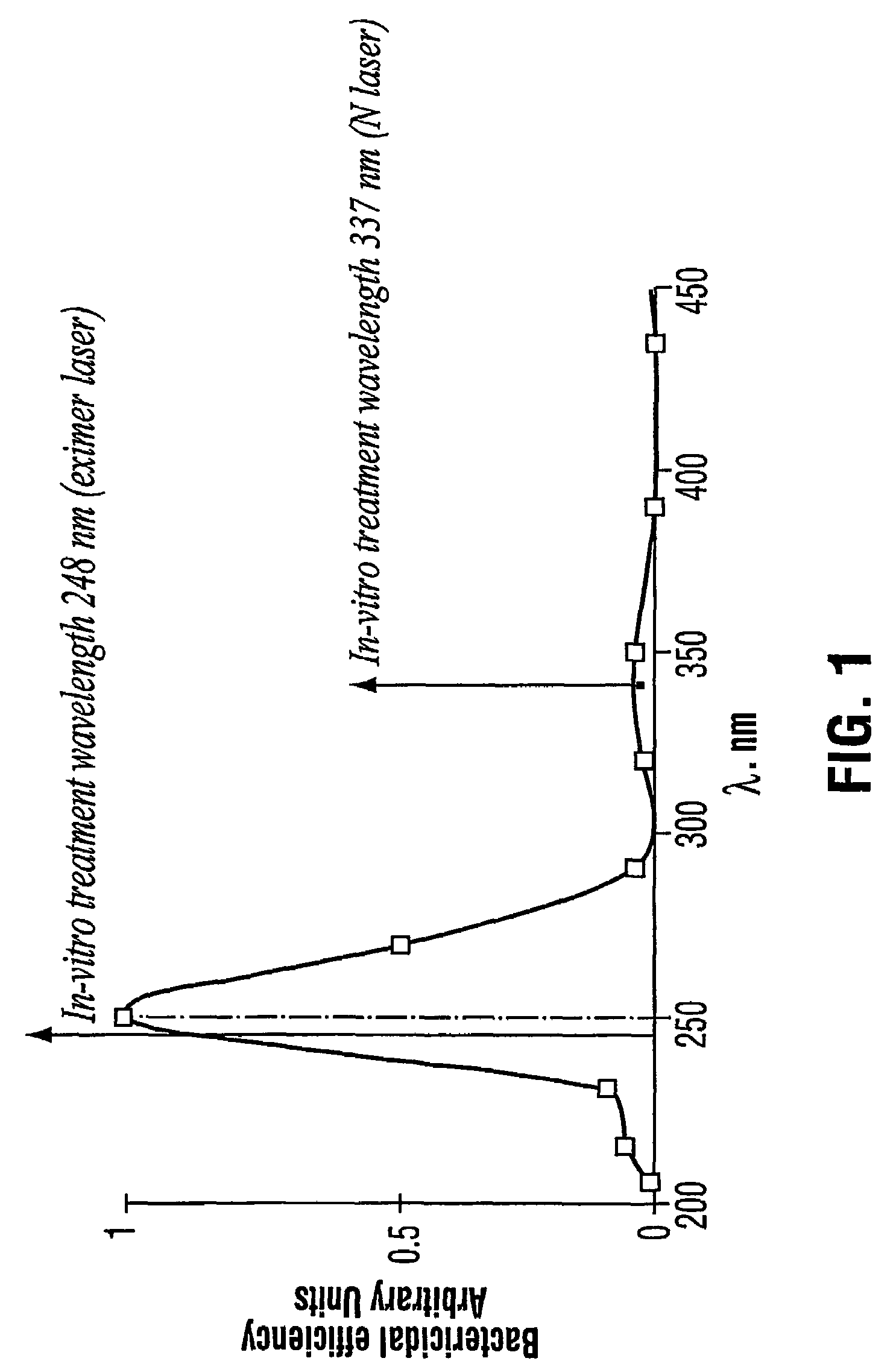Method for treatment of infections with ultraviolet laser light
- Summary
- Abstract
- Description
- Claims
- Application Information
AI Technical Summary
Benefits of technology
Problems solved by technology
Method used
Image
Examples
Embodiment Construction
[0049]This invention derives from the discovery that, although it is known that broad spectrum ultraviolet light is lethal to a wide variety of known microorganisms, including viruses which are extremely resistant to antibiotics, hitherto it had not been fully understood that there is a “best” frequency for each microorganism at which ultraviolet light is most lethal to that microorganism. This logic also appears to apply to both vitiligo and psoriasis even though the causative agent for both of these has yet to be identified. This approach permits the use of the lowest dose, in microwatts / cm2, to achieve the desired level of ameliorative therapy. But this also raises a difficulty, which is that laser generating devices provide a laser beam with only a very narrow wavelength range: a laser provides an essentially monochromatic beam. It then follows that if a laser device is used, although such a device may be tunable to some extent to provide a wavelength either at, or at least clos...
PUM
 Login to View More
Login to View More Abstract
Description
Claims
Application Information
 Login to View More
Login to View More - R&D
- Intellectual Property
- Life Sciences
- Materials
- Tech Scout
- Unparalleled Data Quality
- Higher Quality Content
- 60% Fewer Hallucinations
Browse by: Latest US Patents, China's latest patents, Technical Efficacy Thesaurus, Application Domain, Technology Topic, Popular Technical Reports.
© 2025 PatSnap. All rights reserved.Legal|Privacy policy|Modern Slavery Act Transparency Statement|Sitemap|About US| Contact US: help@patsnap.com


